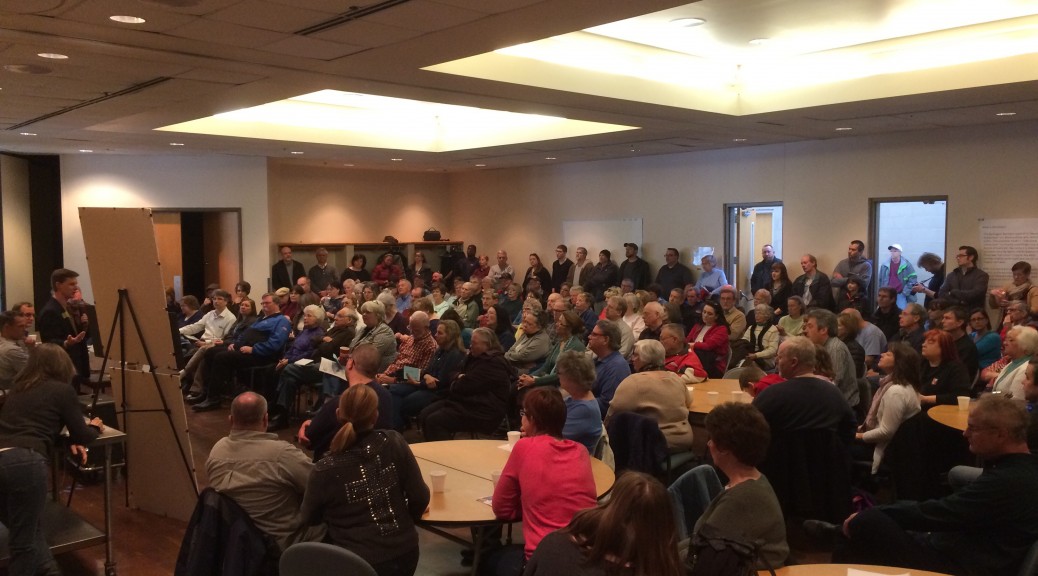2015 Property Valuation Notices began hitting mailboxes in the past few weeks, and if you haven’t received yours yet, you should be getting it very soon.
The Property Valuation Notice indicates the value and classification that will be used to set the property taxes that will be due in 2016. The valuation is the amount that will be used to calculate your property taxes, and the classification is how your property is classified for tax purposes. (Examples of classifications include residential, commercial, agricultural, or rental housing.)
Once you receive your valuation notice, you have two options:
- You can accept the valuation and classification as is, in which case you don’t need to do anything.
- You can appeal your valuation or classification.
Last week the Crystal City Council met with assessors from Hennepin County to get an overview of the process for appeals of valuation or classification.
First, it’s important to understand that the valuation of a property is based off of an appraisal, which is an estimate of the value of the property at a point in time- January 2 of each year. There is always a lag time between the appraisal and the valuation notice. Valuations rely heavily on the sales of comparable properties in the area during the appraisal time period. In addition, state law requires that properties are only inspected by assessors once every 5 years, so your valuation may be based on an old inspection.
So there are many reasons why the valuation of your property in your Valuation Notice may not reflect the current market conditions and could be higher or lower than you expect.
With that in mind, if you feel that your property value should be higher or lower, the first step in the appeal process is to contact the local assessor.
Step 1: Contact the local assessor
You can call the local assessor at 763-531-1117.
You can contact the assessor at any time with questions about your valuation, or the appeal process, but if you are planning to appeal your valuation, you should gather some supporting evidence to back up your position. This could include:
- A recent appraisal of your property
- Recent sales of similar property in the area
- Photos of your property
- Photos or exhibits comparing neighboring properties to yours
If, after working with the local assessor, you cannot come to an agreement on a change to the valuation, you can appeal to the Local Board of Appeal and Equalization.
Step 2: Appeal to the Local Board of Appeal and Equalization (LBAE)
In Crystal, the LBAE is really just the city council. We convene a meeting under a different statutory authority, but it’s the same group of people.
In 2015, our LBAE meeting is 7:00 PM on April 7 at Crystal City Hall.
Property owners can come to the LBAE meeting and appeal their valuation or classification directly to the LBAE. You are not required to work with an assessor before the meeting, but it’s helpful if you do. You will most likely be required to work with an assessor after the meeting anyway.
If you don’t want to appear personally at the LBAE meeting, you can submit your appeal in writing in advance of the LBAE meeting instead.
The LBAE can act to raise or lower your valuation based on the facts that are presented.
Step 3: Appeal to the County Board of Appeal and Equalization (CBAE)
If the LBAE doesn’t resolve your concerns to your satisfaction, you can appeal to the County Board of Appeal and Equalization.
Information on this process is located on the back of your Valuation Notice. Note that you do need to contact the CBAE to get on the agenda, so you have to plan ahead if you plan to appeal to this level.
Optional Step: Minnesota Tax Court
You also have the right to resolve your case in MN tax court.
Information on this process is located on the back of your Valuation Notice.
I hope that this helps explain what can be a confusing process. For more information, you can check out this fact sheet from the MN Department of Revenue, or contact your local assessor at 763-531-1117.
